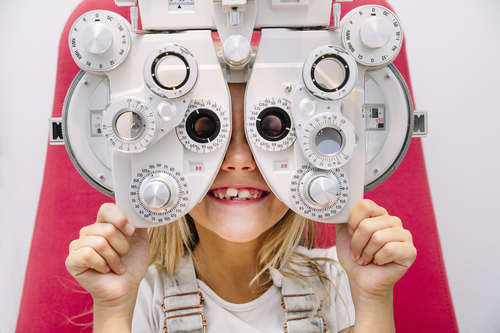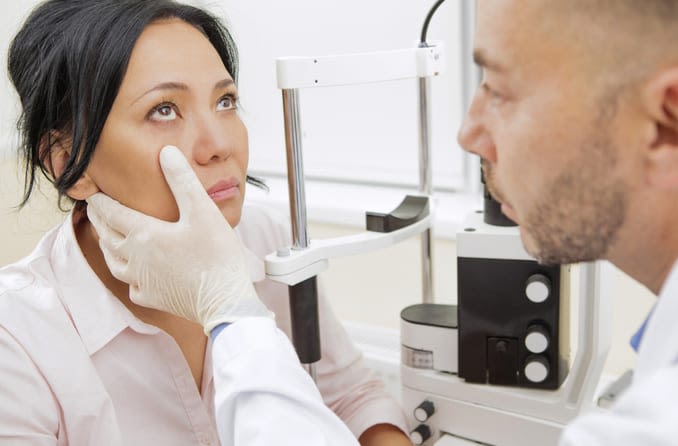Experience Personalized Treatment with Opticore Optometry in Chino
Experience Personalized Treatment with Opticore Optometry in Chino
Blog Article
Exploring the most recent Technical Innovations in Optometry and What They Mean for Optometrists
From the accuracy of Optical Coherence Tomography to the nuanced understandings provided by AI-driven diagnostic devices, these innovations are establishing brand-new standards in individual analysis and treatment. As these improvements penetrate the practice, optometrists are encountered with the challenge of accepting these devices to enhance individual end results.
Innovations in Diagnostic Tools
Advancing the area of optometry, advancements in diagnostic tools have reinvented the means eye care professionals evaluate and identify eye conditions and visual impairments. The past years has actually witnessed significant technological innovations, making it possible for more precise and detailed examinations. Optical Comprehensibility Tomography (OCT), for instance, provides high-resolution cross-sectional pictures of the retina, enabling the very early detection of diseases such as glaucoma and age-related macular deterioration. This non-invasive imaging strategy has actually ended up being important in contemporary optometric technique.
One more key advancement is the introduction of sophisticated corneal topography systems, which map the surface curvature of the cornea with precision. These devices are particularly valuable for fitting call lenses and diagnosing corneal problems. In addition, electronic retinal imaging has transformed typical ophthalmoscopy, supplying in-depth, breathtaking views of the retina that assist in extensive visual evaluations.
The growth of wavefront aberrometry has likewise been essential, making it possible for the evaluation of refractive mistakes with unrivaled precision (Optometrist Chino). This technology assists in tailoring rehabilitative lenses and improving medical end results for refractive surgical treatments. Collectively, these analysis innovations equip eye doctors to supply premium person treatment, making certain very early treatment and customized treatment methods, inevitably boosting visual health outcomes
AI in Patient Management
Building on the structure of sophisticated analysis devices, the incorporation of expert system (AI) in client administration stands for a transformative leap for optometry. AI systems are increasingly employed to improve performance, precision, and customization in patient care. By analyzing vast quantities of data, AI can determine patterns and anticipate prospective eye problems, enabling eye doctors to tailor interventions better. This ability is essential in managing persistent eye diseases such as glaucoma and diabetic person retinopathy, where early discovery and constant surveillance are crucial.
Additionally, AI-driven platforms assist in structured patient interactions and management processes. Automated organizing, virtual assessments, and individualized follow-up plans not only boost patient satisfaction however additionally optimize time administration for experts. These systems can triage patients based upon the urgency of their problems, ensuring that those in vital need receive prompt attention.
Additionally, AI enhances decision-making by supplying eye doctors with evidence-based recommendations and treatment pathways. By integrating data from electronic health and wellness documents, AI devices supply insights that inform medical decisions, minimizing the threat of mistakes and enhancing patient outcomes. As AI remains to develop, its function in individual administration will likely broaden, improving the landscape of optometric treatment.
Developments in Retinal Imaging
In the world of optometry, retinal imaging has experienced impressive technological advancements that are improving analysis capabilities and individual care. Innovations such as Optical Coherence Tomography (OCT) and fundus digital photography have reinvented exactly how optometrists assess the retina and visualize.
Boosted imaging techniques like OCT angiography are more refining diagnostic accuracy. Eye Doctor Optometrist. Such developments assist in the recognition of minute retinal adjustments that could symbolize disease development.
Additionally, improvements in expert system Opticore Optometry are enhancing retinal imaging by allowing computerized analysis of big datasets. These systems aid optometrists in determining patterns a sign of pathology, thus boosting diagnostic accuracy and efficiency. Jointly, these developments are changing retinal imaging right into a keystone of modern eye treatment, improving outcomes and broadening healing possibilities.
Teleoptometry's Expanding Function
Teleoptometry is significantly ending up being a vital component of eye care, driven by advancements in data and analysis devices. As optometry welcomes electronic transformation, teleoptometry helps with remote assessments, enabling eye doctors to expand their solutions past standard borders. This is particularly useful in underserved and rural areas where accessibility to specialized eye care is frequently minimal. By leveraging high-resolution video conferencing and progressed retinal imaging, eye doctors can carry out thorough eye examinations from afar, making sure timely diagnosis and therapy.
The assimilation of man-made intelligence (AI) further boosts teleoptometry, allowing the analysis of visual data and helping in the discovery of ocular problems such as glaucoma and diabetic retinopathy. AI-powered formulas can rapidly analyze complicated imaging information, supplying eye doctors with useful insights that boost clinical decision-making.
Moreover, teleoptometry sustains connection of care via seamless combination with digital health and wellness documents (EHRs), allowing eye doctors to keep extensive person histories. When consulting with various practitioners., this makes sure that clients get consistent and personalized care also.
In spite of these benefits, challenges stay, including guaranteeing information security and managing person assumptions. Teleoptometry represents a significant stride towards more accessible, effective, and patient-centered eye care. As technology develops, its role is poised to broaden additionally.

Future Trends in Eye Care
A myriad of ingenious trends is readied to reshape the future of eye treatment, driven by technical advancements and the progressing demands of patients. One significant trend is the integration of synthetic intelligence (AI) in diagnostics, which promises to boost the accuracy and effectiveness of eye assessments. AI algorithms can evaluate vast amounts of information from retinal pictures, potentially spotting conditions like diabetic person retinopathy and glaucoma earlier than typical techniques.
Furthermore, customized medicine is gaining grip in optometry, with genetic screening notifying customized therapy plans. This method intends to enhance client end results by tailoring interventions to private genetic accounts. Wearable technology, such as clever get in touch with lenses, is also imminent, providing real-time surveillance of intraocular stress or visit this page sugar levels, hence giving constant understandings into systemic and eye wellness.
The fostering of enhanced truth (AR) and online truth (VR) in training and individual education is one more emerging pattern. These modern technologies use immersive experiences that can pop over here boost understanding and skills both for patients and optometrists. As these fads advance, eye doctors must stay abreast of technological innovations to supply innovative treatment, ensuring enhanced person outcomes and satisfaction in the dynamic landscape of eye treatment.
Conclusion

Jointly, these diagnostic developments equip optometrists to deliver premium person treatment, ensuring very early intervention and customized therapy approaches, inevitably enhancing visual wellness end results.

As these technologies proceed to advance, eye doctors must adapt and integrate them right into practice, inevitably enhancing process performance and elevating the criterion of eye care provided to individuals.
Report this page